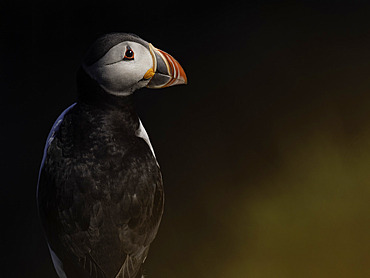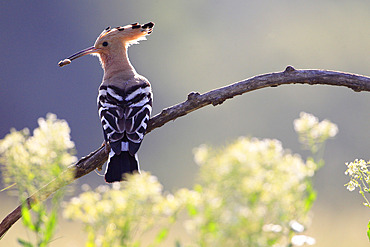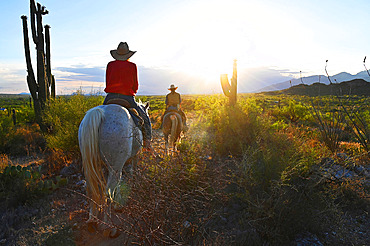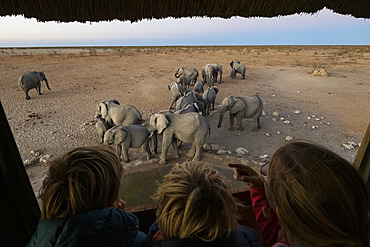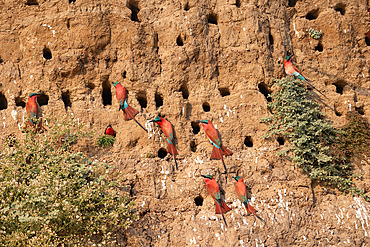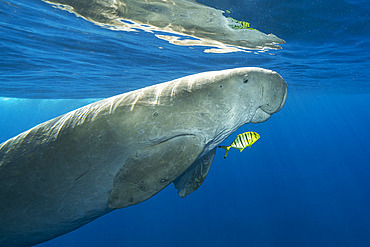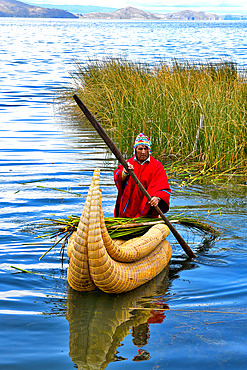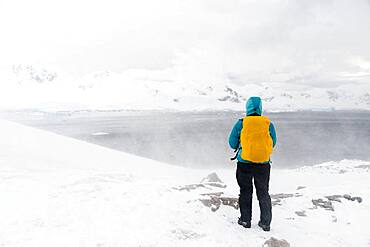Recent searches
Loading...
860-292470 - Atlantic Puffin (Fratercula arctica), Sumburgh, Shetland, Scotland
860-292444 - Speleologist diver taking photographs in a karstic cave at Passe Bateau Sud at a depth of 60 metres, Mayotte
860-292443 - Tek rebreather diver at a depth of 70 meters with a DPV specially equipped with 60,000 lumen lighting and 12 Gopro to carry out a 3D survey of a karstic cave submerged for over 14,000 years, Passe Bateau Sud, Mayotte Lagoon
860-292432 - Vulturine guinea fowl (Acryllium vulturinum), group in the savannah, dry shrubby savannah, Laïkipia County, Kenya, East Africa, Africa
860-292410 - Hoopoe (Upupa epops) with a larva in its beak
860-292309 - Thomson's gazelle (Eudorcas thomsonii) on slash-and-burn, Serengeti, Tanzania.
860-292304 - Great migration of Blue Wildebeest (Connochaetes taurinus) in the Serengeti, Tanzania.
860-292305 - Great migration of Blue Wildebeest (Connochaetes taurinus) in the Serengeti, Tanzania.
860-292303 - Great migration of Blue Wildebeest (Connochaetes taurinus) in the Serengeti, Tanzania.
860-292264 - Horseback riding in the middle of giants saguaro cactus. Tanque Verde ranch. Tucson. Arizona. USA.
860-292243 - Common Raven (Corvus corax) on a branch in the rain, Poland
860-292192 - Emperor penguins (Aptenodytes forsteri) on pack ice, McMurdo Sound, Ross Sea, Antarctica
860-292190 - Killer whale (Orcinus orca) and Emperor penguins (Aptenodytes forsteri) on pack ice in the Ross Sea, McMurdo Sound, Antarctica
860-292189 - Killer whale (Orcinus orca) and Emperor penguins (Aptenodytes forsteri) on pack ice in the Ross Sea, McMurdo Sound, Antarctica
860-292181 - Long-tailed Sylph (Aglaiocercus kingii) on a leaf, Colombia
860-292101 - Snowshoeing at La Dole, Jura sur Leman ski resort, Canton Vaud, Switzerland
860-292067 - Springbok (Antidorcas marsupialis). During a sandstorm in the dry bed of the Nossob river. Kalahari Desert, Kgalagadi Transfrontier Park, South Africa.
860-292001 - Tourists and African Savanna Elephants (Loxodonta africana) at waterhole, Olifantsrus waterhole, Etosha National Park, Namibia
860-292000 - African savanna elephant (Loxodonta africana) at waterhole, Olifantsrus waterhole, Etosha National Park, Namibia
860-291953 - Southern Carmine Bee-eater (Merops nubicoides), on the cliff of the Luangwa river, Luangwa river, South Luangwa natioinal Park, Zambia
860-291938 - Riders at a game of Kok-boru (or Ulak-tartish or Buzkachi), Central Asian equestrian games at the Noorus festival, Kotchkor, Naryn Region, Kyrgyzstan
860-291910 - Green turtle (Chelonia mydas) swimming back to the surface to breathe after feeding on seagrass. Abu Dabbab Bay, Marsa Alam, Egypt, Red Sea
860-291906 - Dugong (Dugong dugon) swimming back to the surface to breathe after feeding on seagrass meadow (Halophila stipulacea), accompanied by a young Golden trevally (Gnathanodon speciosus). Marsa Alam, Egypt. Red Sea
860-291905 - Dugong (Dugong dugon) swimming back to the surface to breathe after feeding on seagrass meadow (Halophila stipulacea), accompanied by a young Golden trevally (Gnathanodon speciosus). Marsa Alam, Egypt. Red Sea
860-291904 - Dugong (Dugong dugon) rear view showing the distinctive mammalian tail. Marsa Alam, Egypt. Red Sea
832-401372 - Taillight of an old classic American car, wide angle shot on a sunny summer day
832-401373 - Taillight of an old classic American car, wide angle shot on a sunny summer day
860-291780 - Tourists in the lava tunnels, Reunion Island, France
860-291763 - Woman at the edge of Bassin des Aigrettes, Saint Gilles, Reunion Island, France
860-291762 - Woman at the edge of Bassin des Aigrettes, Saint Gilles, Reunion Island, France
860-291722 - The Hautes Combes, Nordic skiing, in the background: the Jura Mountains, Jura, France
860-291696 - Lake Bellefontaine, front (Jura), Lake des Mortes, back (Doubs), France
860-291617 - Great Grey Owl (Strix nebulosa) on a branch under a snow shower, Cap Tourmente, Quebec, Canada
860-291596 - Aymara bringing back the totora (Schoenoplectus californicus subsp. tatora) that he has just cut. Lake Titicaca, Bolivia
860-291525 - Barn owl (Tyto alba) perched on a post, England
860-291509 - Lion (Panthera leo) lioness in the savannah, Etosha National Park, Namibia
860-291470 - A meerkat or suricate (Suricata suricatta) in the early morning light. Cradock, Eastern Cape. South Africa.
860-291454 - Dog sledding in the Alps, Samoens, Haute-Savoie, France
860-291375 - Extraction of ice cube from the Lena river for use as drinking water by residents without access to running water, Yakutsk, Republic of Sakha, Russia
860-291216 - Two bald eagles (Haliaeetus leucocephalus) are sitting on a tree
860-291090 - Zebra (Equus quagga). Back view. Kenya. Tanzania. National Park. Serengeti. Maasai Mara.
860-291252 - Northern goshawk (Accipiter gentilis) on a stump in hiver, Bialowieza, Poland
860-291294 - Atlantic puffin (Fratercula arctica), Mykines Island, Faroe Islands, Denmark.
860-291050 - European Roller (Coracias garrulus) caught a bug at sunrise, Slovakia
860-291076 - Southern double-collared sunbird or lesser double-collared sunbird (Cinnyris chalybeus) perched on a pincusion flower. Cape Town, Western Cape. South Africa
860-291220 - Big colony of the bee-eaters (Merops apiaster) in their burrows on a clay wall. Africa. Uganda.
860-291233 - African Ostrich (Struthio camelus) female with pack of chicks grooming in sand in Kgalagadi transfrontier park, South Africa
860-291360 - Lioness (Panthera leo) watching Nairobi Skyline, Nairobi National Park, Kenya
860-291205 - Portrait of a buffalo (Syncerus caffer) with birds on his back in the savannah. Close-up. Africa. Uganda.
860-291348 - Winter. Red fox (Vulpes vulpes) in a very cold afternoon. Slovakia
860-291355 - Spotted hyena or laughing hyena (Crocuta crocuta) rear viewing showing ears. Kruger National Park. Mpumalanga. South Africa.
860-291390 - Topi (Damaliscus korrigum), in the savannah, mother and new born, Masai Mara National Reserve, National Park, Kenya, East Africa, Africa
860-291221 - Big colony of the bee-eaters (Merops apiaster) in their burrows on a clay wall. Africa. Uganda.
860-291080 - Blue wildebeest or common wildebeest, white-bearded wildebeest or brindled gnu (Connochaetes taurinus) crossing the Mara River. Serengeti National Park. Tanzania
860-291399 - Brown hare (Lepus europaeus) in a field, Switzerland.
860-291096 - Tail of Blue whale diving (Balaenoptera musculus) Reaching a maximum confirmed length of 30 meters and weighing up to 200 tons, it is the largest animal known to have ever existed. Azores, Portugal, Atlantic Ocean.
860-290938 - Indian Cobra and woman gathering sticks Tamil Nadu India
860-290908 - Rock Ptarmigan (Lagopus muta) in autumnal Tundra in the north west of Greenland. America, North America, Greenland, Denmark, August
860-290447 - Girl playing with her lawnmower in a garden, summer, Pas-de-Calais, France
860-290831 - Female Serval (Leptailurus serval) in the savannah, Masai Mara National Reserve, National Park, Kenya, East Africa
860-290686 - A white rhinoceros, Ceratotherium simum, in Masai Mara Rhino Sanctuary, escorted by anti-poaching guard. Masai Mara National Reserve, Kenya, Africa.
860-290553 - Brown hare (Lepus europaeus) amongst stubbles, England
860-290687 - A white rhinoceros, Ceratotherium simum, in Masai Mara Rhino Sanctuary, escorted by anti-poaching guard. Masai Mara National Reserve, Kenya, Africa.
860-290626 - Man hunting with his dog breed german pointer, Vaucluse, France
860-290690 - Lions, Panthera leo, walking in a row as a rain storm approaches. Masai Mara National Reserve, Kenya, Africa.
860-290665 - Tourists watching African Elephants (Loxodonta africana) at waterhole, Etosha National Park, Namibia
860-290829 - Serval (Leptailurus serval) in the savannah, cub (2 months old) with its mother, Masai Mara National Reserve, National Park, Kenya, East Africa
860-290654 - Bullfinch (Pyrrhula pyrrhula) males on a frosted reed, Vosges du Nord Regional Nature Park, France
860-290590 - Lion (Panthera leo) and Burchell's Zebra (Equus quagga burchellii) in the savanna, Etosha National Park, Namibia
860-290817 - Serval (Leptailurus serval) in the savannah, cub (2 months old) jumped on the mother's back, Masai Mara National Reserve, National Park, Kenya, East Africa
860-290577 - Great Flamingos (Phoenicopterus roseus) in flight, Camargue, France
860-290685 - A white rhinoceros, Ceratotherium simum, in Masai Mara Rhino sanctuary escorted by an anti poaching unit. Masai Mara National Reserve, Kenya, Africa.
860-290772 - Common Kingfisher (Alcedo atthis) on a dead tree, National Forest Park, Haute-Marne, France
1116-52047 - Common loon (Gavia immer), an adult loon carries two babies on his back, La Mauricie National Park; Quebec, Canada
832-393394 - Female nude, back view of an older, thicker woman with wrinkles, studio shot, Germany, Europe
860-290401 - Great flamingo (Phoenicopterus roseus) open wings under a light snow shower, Etang de la Grande Maire, Serignan, Herault, France
860-290377 - France. Hunting. The European commission has adopted in january 2021 a ban on using lead 100m around any wetland in Europe. So far in France, the ban is only 30m. In the future, the lead will be totally banned as 6000 tons of lead is put into nature by hunters every year causing death of thousands of birds (here a mallard) eating lead balls.
860-289733 - Spectacled eider drake (Somateria fisheri), arctic tundra, Alaska, June 2019
860-289911 - European Red Wood Ant (Formica polyctena) drinking a drop of water, Lorraine, France
860-290051 - Western roe deer in cornfield, Capreolus capreolus, Roebuck, Hesse, Germany, Europe
860-290244 - Gentto penguin (Pygoscelis papua) calling at rainbow after a storm, Sea Lion island, Falkland, January 2018
860-290154 - European Bee-eater (Merops apiaster) adult bringing a bumblebee to the nest , May, South France
860-290225 - Grey heron (Ardea cinerea) at dawn posted on the back of a hippopotamus (Hippopotamus amphibius) at a waterhole. Kruger NP South Africa
860-289770 - A Whooper Swan (Cygnus cygnus) on the frozen lakes of Hokkaido, Japan.
860-289725 - Beech marten (Martes foina) at the water's edge, Extremadura, Spain
860-290236 - Brown Hare (Lepus europaeus). A Brown Hare peeps up in the Peak District National Park, UK.
860-290314 - European Kingfisher (Alcedo Atthis) on the look-out on the banks of the Loire River, Loire Valley, France
860-289902 - European Red Wood Ant (Formica polyctena) drinking a drop of water, Lorraine, France
860-289719 - Beech marten (Martes foina) on a trunk, Extremadura, Spain
860-290395 - Uganda's Kob (Kobus thomasi), Murchison Falls National park, Uganda
860-289774 - A Water Vole (Arvicola terrestris) assesses his surroundings in the Peak District National Park, UK.
860-290111 - Polar bear (Ursus maritimus) wandering alone on the pack ice, leaving its footprints in the snow, arctic ocean off the coast of Spitsbergen.
860-289031 - Mongolian horsemen lead a troop of horses running in a meadow covered by snow, Bashang Grassland, Zhangjiakou, Hebei Province, Inner Mongolia, China
860-288731 - A snowstorm hits two tourists watching the landscape in Neko Harbour, Antarctica.
860-288732 - A tourist hiking in Neko Harbour, Antarctica.
860-289027 - Mongolian horsemen lead a troop of horses running in a meadow covered by snow, Bashang Grassland, Zhangjiakou, Hebei Province, Inner Mongolia, China
860-288730 - A snowstorm hits a tourist watching the landscape in Neko Harbour, Antarctica.
